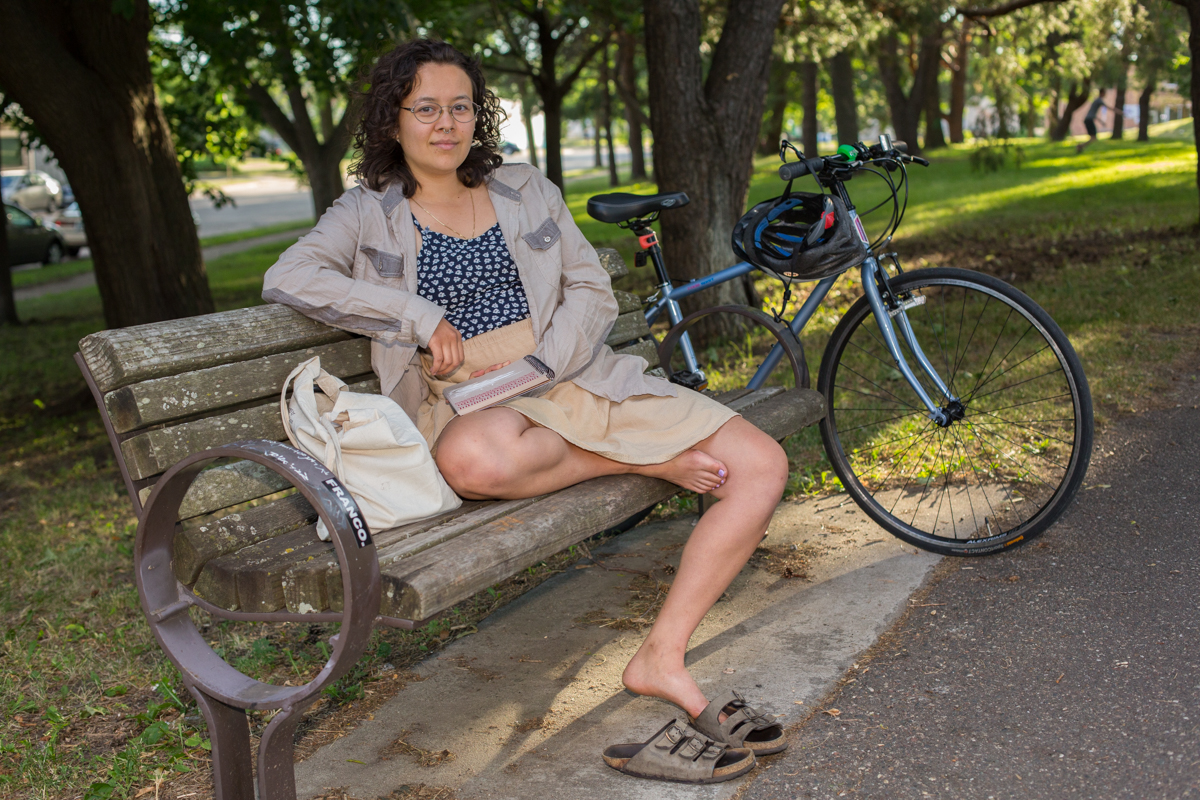In 2016, the Minneapolis Parks Foundation teamed up with Humans of Minneapolis street documentarian Stephanie Glaros to produce a series of 15 portraits of visitors to Minneapolis neighborhood parks.
Here, we’re re-posting Stephanie’s series of portraits of parks visitors from her Humans of Minneapolis blog. Look for all portraits in the series on this blog – 2016 and, coming soon, 2017 – by clicking on the Humans of Minneapolis category.
—
Alizarin, at Matthews Park
“I live a few blocks away. It’s good to have an oasis to just sit and be outside. The benches are really nice, or I can sit on the grass and write or draw. I love that there’s tons of Somali, Oromo, and Eritrean families that come here. It’s important to me to see black and brown people represented in public spaces because it’s not something I see in all parts of the city. It’s a nice community feel. There’s grills and tables, so people use it for large personal gatherings, which I think is a great use of public space, especially when it’s celebratory. It allows for whatever things people need to do.
My name, Alizarin, is a color. It’s kind of a purplish-red. My mom is a painter, so she’s pretty much had me do art since I was a little kid. She’s Chinese. Having a mother who is a woman of color artist whose purpose her whole life has been to make art, I don’t think I even realize how deeply that’s ingrained in me. Art is a part of life. It’s a part of who we are. It’s a source of a lot of inspiration for me.
They should hire more artists in the parks. It’s cool that you can go to different sites around the cities and see different murals, but you’re always in motion on the streets around the murals. So I think the parks would be a cool place for them because people are stationary for longer periods of time. A lot of artists do community engagement work. They can make a big change by just listening to people and how they want to be represented. Maybe the artist could be the facilitator and the people who live in the community could paint the murals. People would be super proud. And it brings history, too, because it’s painting a picture of how things are now, at this moment, and capturing it. This is how we were feeling at the time and how we want to represent our community.
There’s a lot of transformative potential in creating things. I think some of the best art isn’t necessarily technically good, but when people see it, something about it speaks to them.”
Listen to Alizarin’s story:
—
Images and content are reposted with permission from Stephanie Glaros/Humans of Minneapolis.

